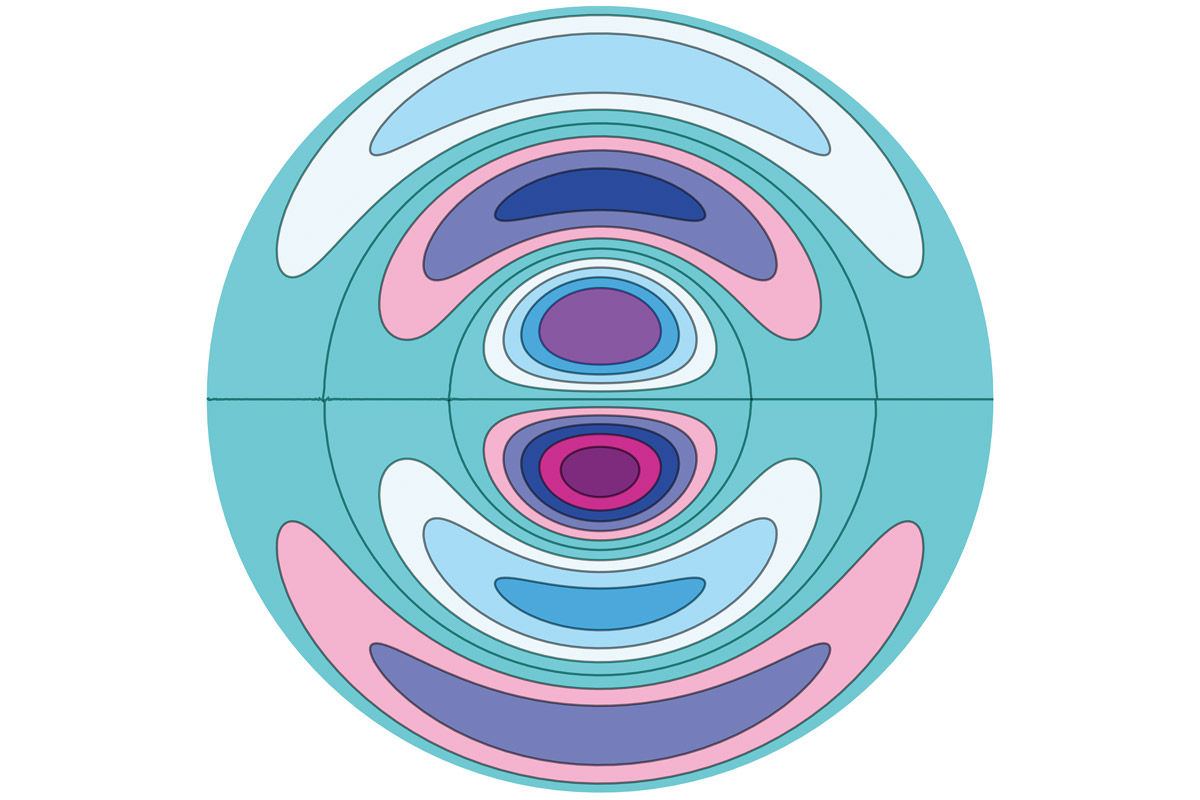Can You Hear the Shape of a Drum?
Waves and particles take center stage in two courses with Prof. Joel Franklin ’97
A drummer strikes the snare. Its surface oscillates, rapidly causing waves of pressure to move through the air. When these reach you, sitting in the audience or on the dance floor, your eardrum responds. The frequencies present in the wave, combined with their individual amplitudes, determine what you hear.
Can you hear the shape of that drum? The image above demonstrates the pattern of oscillation (called a normal mode) of a vibrating drumhead stretched over a circular boundary, a phenomenon students examine in Physics 201, Oscillations and Waves, with Prof. Joel Franklin. The colors represent the height of the drumhead above or below its resting height when excited by a musician’s sticks or brushes. Each normal mode is associated with a distinct frequency. Drummers excite multiple frequencies, multiple normal modes, when they play. Later on, in Physics 342, Quantum Mechanics I, students learn that images like this can be used to indicate the likely location of a particle confined to a circular domain. In this case, the color refers to the probability of finding the particle in a particular spatial region, and the normal mode’s single frequency becomes the particle’s energy.
Physics is characterized, in part, by mathematical economy. The question posed in the title provides a relation between the two problems. If you could determine, from the frequencies present in the rhythmic cadence of your favorite song, whether a drum was round or square, then you could also determine the shape of the confined space in which a particle was free to roam quantum mechanically.
The headline comes from the title of an article by Mark Kac, American Mathematical Monthly, 74 (4, part 2): 16, April 1966.)
Tags: Academics, Object of Study, Professors, Research
